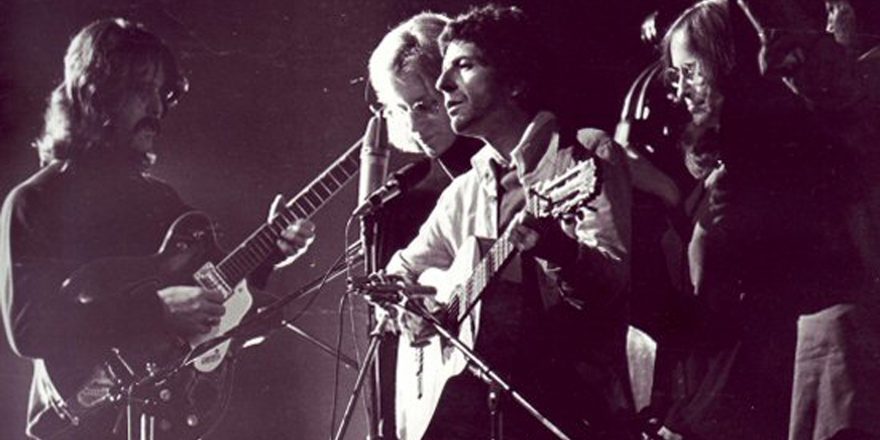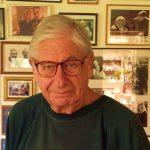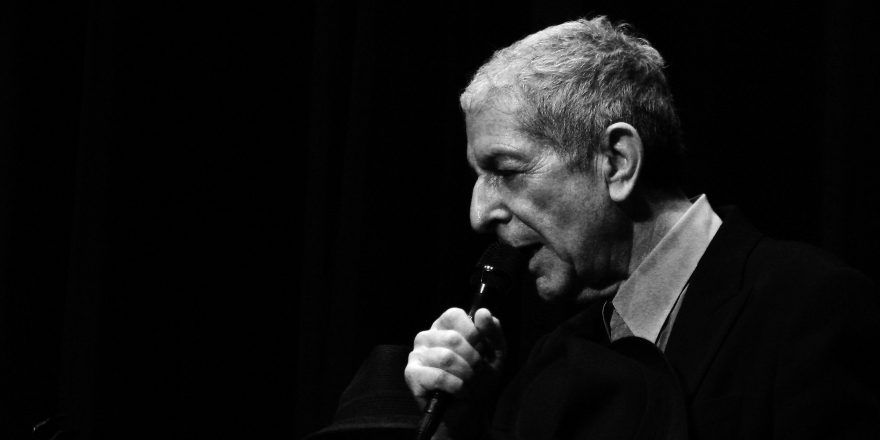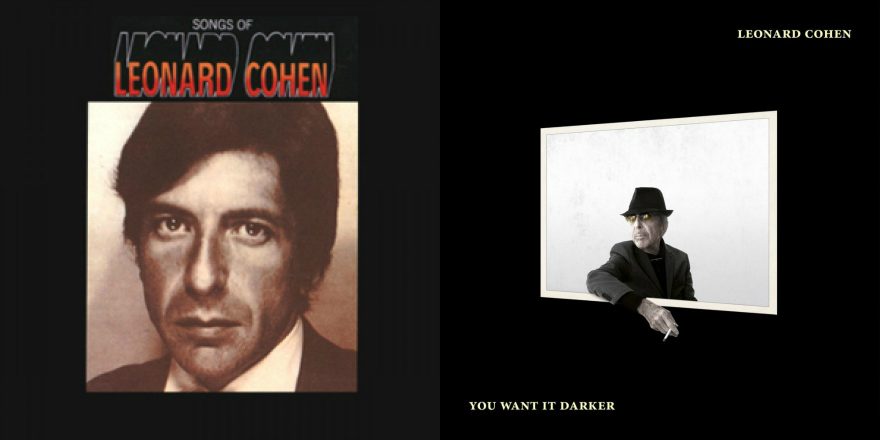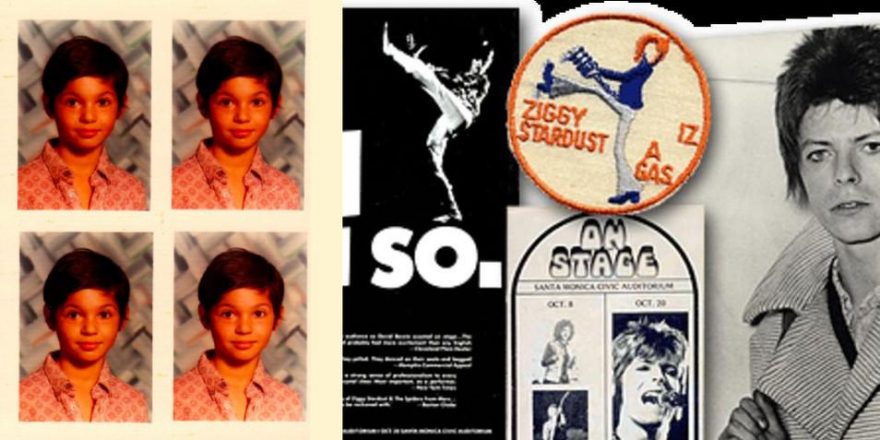My film about Leonard Cohen’s 1972 European tour has a complicated history.
Let me clear up one or two complete misconceptions, I might want to say misrepresentations. I was asked to make the film by Marty Machat, Cohen’s manager right up until his death in 1988. It was essentially his initiative, at least in part because he feared Leonard might never tour again thereafter. Mercifully this did not turn out to be the case, but given that at the time Cohen had frequently asserted: a) he did not enjoy touring, saying it exhausted him for no good purpose; b) he hated having to repeat the same old songs night after night, claiming he was rendering them meaningless by endless repetition; c) he believed he was a poor performer on stage, crippled by an indifferent voice; and d) as his first three albums had sold poorly, he thought he might not have an audience. All of this he explained to me the first time we met, in Machat’s office in New York, October 1971. Cohen was resigned to a film being made about the tour, however, because he hoped this might just bring him to a wider audience. I say “resigned” because he was less than enthusiastic, especially when I said a condition of my becoming involved was that I would require total access to whatever I thought was necessary for a stimulating, and I hoped positive, film. Very reluctantly he agreed, and Machat said he would pay for the film himself so that Leonard would not be burdened with the expense.
Leonard kept his word, and I was given complete access and encouraged to interpret the material collected in any way I thought desirable. I also said it would be pointless recording all of the songs for every single concert, so we agreed that although I would be there for all 20 concerts, I would only record the music on four or five occasions. And as I felt very strongly that his poetry was a key to understanding the man, I also suggested that we film him reading some of the poems. With this he readily agreed. Indeed, so pleased was he with this idea that he even composed a poem especially for me, and wrote it out by hand and signed it in the frontispiece of my copy of The Energy of Slaves. And maybe what is valuable about the film today is not only that it contains 17 of his greatest songs performed by him in his prime (and it’s nonsense – of him – to say he has no voice), but it has a real feel for the rough and tumble and difficulties of life on the road. I know of few other films where the backstage confusion comes so vividly to life, with Cohen apparently taking no notice whatsoever of the camera. And don’t forget, this film was shot in 1972, with slow celluloid color stock, requiring a lot of light to get any decent exposure at all. With today’s digital technology, we would have been virtually invisible. But I doubt if today we would be allowed such access.
With a budget of around £35,000, and a crew of only four, the filming schedule went ahead as planned and, as I am my own editor, the rough cut of the film was delivered about a month after the tour finished. The BBC asked to see the rough cut and bought the film on the spot. Machat would have recouped three-quarters of his investment in one go. Alas, Cohen told me he thought the film was “too confrontational,” and worried that he often appeared “exhausted, even wasted.” While the latter is undoubtedly true, about the former I believed he was wrong.
However, my regard for him as a poet, a performer and as a man had grown hugely during the film, so I wanted to give him the benefit of the doubt. Machat asked me to make available all the raw material (the “rushes” or “dailies”), and “they would see what they could do.” What I did not know at the time was that my assistant editor had told them he could do a whole lot better than me. Nine months later, and hundreds of thousands of dollars later (now of Cohen’s money), a second version of the film was ready. I was told it was shown to the BBC, who turned it down flat saying it was “a mess.” I now have a copy of their letter. I was also told by Machat that he had refused to pay for the re-editing, thinking that this was now Cohen’s responsibility. Version 2 had a brief theatrical outing and was shown for one night only at the Rainbow Theatre in North London, July 5, 1974, almost two years after I had delivered the original version. I was not invited to see the revised version, was not at the Rainbow, and only saw it for the first time six months ago. Had I seen it then, I would have insisted my name be removed, because although it contains about 50 percent of my original film, the structure has been destroyed, the musical editing is crass beyond belief, and the whole purpose of the film (which I shall come to in a moment) had been lost. When I read that Cohen would only promote the film “through gritted teeth,” I could understand why.
As is well-known, the film then apparently disappeared. Stupidly, I had never kept a copy of the original version for myself. Meanwhile, in every biography of Cohen that appeared I read totally misleading information about the film – and incidentally, not a single one of these biographers ever bothered to consult me. I read that I had made a film about Tom Jones, which is why I was “chosen.” I have never even met Tom Jones. I read that the film was producer Bob Johnston’s idea. Simply untrue. One recent biographer even gets the title of the film wrong and also the date of its filming. And so on, and so on.
Then, in 2009, 294 rolls of film were discovered in a warehouse in Hollywood, many in rusted up cans that sometimes had to be hammered open, and returned to their present owner, Machat’s son Steve, via shenanigans so tortuous they read like a
B-movie plot. These cans were then shipped to me by, of all people, Frank Zappa’s manager. I believed at first that nothing could be salvaged. The cans did not contain the negative (still lost); some of the prints were in black and white; and much of it had been cut to pieces and/or scratched beyond use. But when I finally opened one box and found most of the original sound dubbing tracks, I knew we had a hope of putting the jigsaw back together.
So now, taking full advantage of the latest digital technology, this is what we have done, piece by piece, slowly and painstakingly, putting together almost 3,000 fragments. It has taken months and months, and probably has cost more than the original filming, and although it’s by no means perfect, it’s very close now to the original. On balance, it doesn’t look too bad, but it does sound wonderful – I would want to say that many of the recordings are far superior, certainly more moving, than their equivalent on disc. Above all, on balance what we have done is very close to the spirit of the original.
Which brings me finally to the original purpose – my original purpose – in making the film. Yes, the songs are haunting, unforgettably so. The poetry, now restored having been deleted in Version 2 by persons unknown, is extraordinary. But so is the man. Cohen objected in the original film to scenes of a riot in Tel Aviv. I wanted the scenes because they showed Cohen’s power over an audience, not by him shouting, but simply by his presence. Authority doesn’t really describe it; transparent goodness is probably closer. And a profound belief that it is the poet’s responsibility to address the problems of the world, the political problems. In this he is a true blood brother of Bob Dylan. Yes, his songs – like those of Dylan – are riddled with personal details, but like all great art they transcend these and make them relevant in a more universal sense. Just look at the lyrics for The Story of Isaac. They begin with references to a father appearing “when I was 9 years old.” Cohen’s father died when he was only 9. But that’s not what the poem or the song is about. It is about those “who would sacrifice one generation on behalf of another,” as Cohen says in the film. That belief, tough and uncompromising though it is, is the centre of my film, so woefully laid to waste by those who attempted to destroy what we had done.
Now, looking back after so many years, my admiration for Cohen as a poet, a singer and as a man, remains undiminished. The original film was made with love, and I hope that quality once again shines through the restored film.
A version of the above was originally published in 2010. It is reprinted here with permission.


